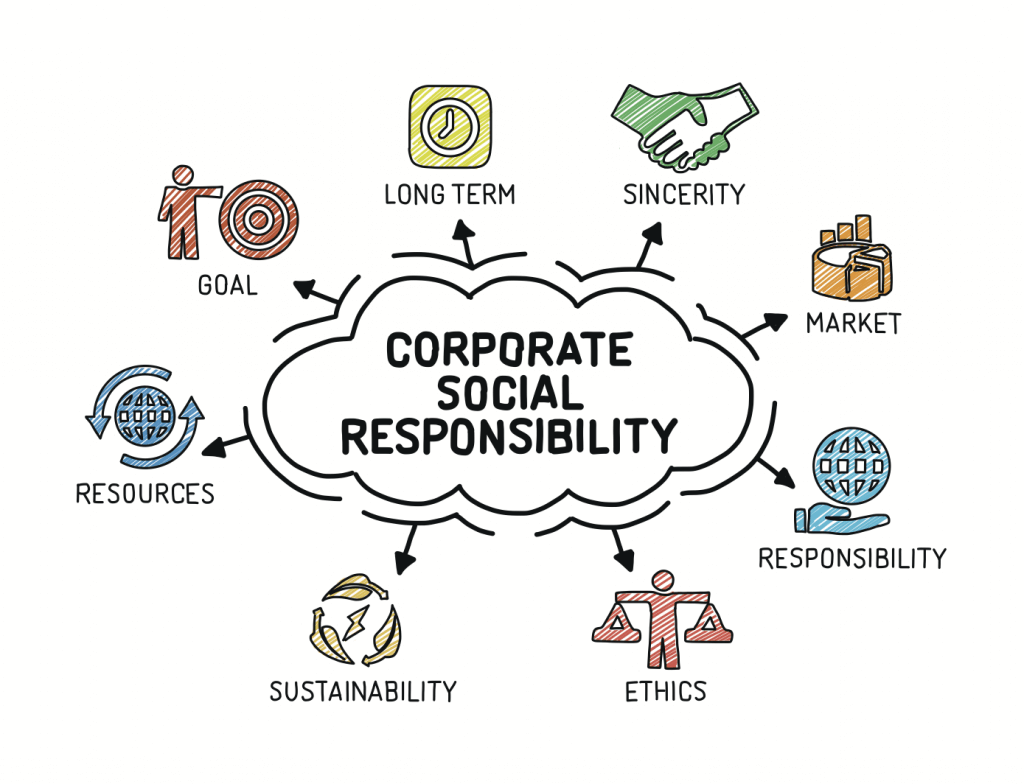HIGHER EDUCATION - UNDERSTAND YOUR DONORS’ UNMET NEEDS IN ORDER TO MEET YOUR OWN
In this second part of our series on Higher Education, ViTreo Senior Associate Michael Donlevy, who has many years of experience as a senior executive in the post-secondary field, shares his thoughts on how learning organizations can be more successful in their fundraising by changing how they present funding and donation opportunities to their audiences.
Higher Ed - Understand Your Donors’ Unmet Needs In Order To Meet Your Own
Turning ‘philanthropic bundling’ on its head
Michael Donlevy, ViTreo Group
July 14th 2020
The “good old days” of corporate altruistic giving, if not corporate strategic philanthropy, are over. And, if it wasn’t over before it almost certainly will be in the post-COVID world. Today, corporations are focused on more than just “doing good”; their efforts must also serve their own strategic interests with respect to strengthening their brand and enhancing their public image.
To increase chances of success, nonprofit fundraisers need to ensure the ask aligns with the corporation’s investment pillars. Corporate funders now often look to combining or 'bundling' donations with meeting strategic corporate objectives.
In the past, many corporate and business enterprise donors would choose to donate in support of “the right cause” within their community or the communities where they did business or where their employees “lived, worked and played”.
In many ways, these decisions were guided by the very reasonable objective of doing the right thing and were, with some measure of consistency, significantly influenced by the folks on the ground – local management or employee groups who could advocate for larger gifts. In addition, they often had their own localized budgets to sponsor the local minor hockey team, or support a community charitable cause, for example.
CORPORATE SOCIAL RESPONSIBILITY OR COMMUNITY INVESTMENT INSTEAD OF GIVING
For large organizations and increasingly for smaller businesses, Corporate Social Responsibility (CSR) departments emerged over time. With that, specific areas of focus where organizations would invest were developed - which aligned with strategic objectives. Community Investment became a common part of the lexicon (along with CSR) and with that, a more centralized approach to these decisions.
What I have observed is that, while understandably driven by the intention of maximizing impact and consistent messaging, there was a decreasing level of influence at the local level; indeed local budgets for community charitable or sponsorship purposes were reduced significantly and progressively. Economic conditions didn’t help either. That did not bode all that well for local community groups who previously could rely on funds to support them, from the company who did business in their community, whose local manager had no more budget and not much opportunity to advocate on their behalf. Smaller institutions or charitable organizations would, at times, suffer.
Notable as well was the effect that centralization had of reducing influence on these decisions by local organizations who could speak directly with the local manager or franchisee. Head Office approved the larger investments, with a focus on charitable entities where it made sense from a strategic perspective (i.e. health, education, environment, social causes and establishing strong linkage to their brand, e.g., CIBC - Run for the Cure, Bell - Let’s Talk and so on). More and more we heard about sizeable donations or investments by regional and national organizations that were generous and positively influential – but to fewer numbers of charitable entities.
Adding to this diminished local influence was the overlaying at times of complex, detailed and eventually online application processes, which taxed volunteers, called for dedicated grant writers and on occasion, compelled smaller organizations to ask, “Why bother?”
Photo comic of two fundraiser at looking frustrated at some papers, a person (possibly their boss) walks by and says, “It’s a grant application, don’t try to make sense of it.”
At the corporate level, major community investment decisions were increasingly, and now generally are, made by committee. Often there is limited opportunity for a charitable entity in a community with a request worthy of consideration or a strong case for support to develop a meaningful relationship with the donor through its community investment representative.
Arguably, this runs contrary to the fundamental tenet of effective fundraising which relies on building relationships, cultivation, invitation and stewardship with our donors. The opportunity to make an ask, at the right time, in a respectful mutually beneficial engagement, based on earned trust, is diminished as a result.
To be sure, all of these shifts are understandable. Considering limited budgets, shareholder and public scrutiny about where organizations donate and how much, the optics of donating when a company is laying off staff; the list is endless. Consolidating budgets, where fewer but more impactful gifts could be made and could be well-vetted in a corporate strategic context first, is prudent and advances shareholder value.
CHANGING YOUR APPROACH
As always, I think it’s important to look for the opportunities in any situation – and the key is in uncovering the unmet needs.
In the case of higher education, if not across all charitable sectors, the Corporate / Business enterprise is firmly about ‘investment’ rather than ‘donating’. Today, corporations must also meet the Environmental, Social and Governance (ESG) criteria that socially conscious investors use to determine whether they want to invest in a company. Environmental criteria determines how an organization performs as a steward of nature; social criteria looks at how it manages relationships with its employees, suppliers, customers, and the communities where it operates; governance considers a company’s leadership, executive pay, audits, internal controls, and shareholder rights. On top of that, measurable ROI on the donation / investment is critical.
There has been an increasing desire on the part of corporate funders, in my view, with regard to “bundling”; that is, where a business wants to achieve more than just philanthropic good or to support a cause because it’s the right thing to do.
This creates an opportunity for donor relations / gift officers of organizations who are willing and able to offer – and creative enough – to present a bundle - combinations of direct donations, coupled with branded sponsorships to enable support of a wide, divergent range of options for consideration, such as program investment, scholarships and brand presence that aligns with their key objectives.
“I have always said that ROI stands for results, outcomes, impact. Using and talking about a social return on investment is an opportunity to align charitable purpose with business purpose.” - The Provocateur, The Nonprofit Narrative That Should Be Told.
ALWAYS CONSIDER THE ROI
If we look at the Charitable ROI - Results, Outcomes, Impacts of doing this, it is even more critical for charities / nonprofits to be able to articulate this, to secure leadership investments from these organizations:
As a specific example, where they may be able to access one or multiple sources of funding, businesses might consider a combination of:
donating to support students through awards / scholarships
sponsoring a property or asset or event(s) on campus to gain brand and image enhancement; and
investing in programs that tie back to the organization in some manner (e.g. engineering firm investing in an Eng.Tech program enhancement or technology upgrade
“Successful charitable fund-raising has much in common with managing a business: It requires leadership, persistence, and creativity.” - David Rockefeller
MEETING THE UNMET NEEDS OF YOUR AUDIENCE WILL LEAD TO SUCCESS
The challenge to fund development officers, whether in universities or colleges or their individual schools, is to engage prospective corporate or business donors in terms of benefits to them, uncovering their unmet needs. Then as part of the advance research into a corporate / business prospect, to arrive prepared to offer opportunities beyond just seeking a donation that follows traditional pathways.
Encouraging and having a mind-set to take such an approach, being mindful and pro-active around bundling, will afford post-secondary institutions greater opportunities to secure larger investments, perpetuate a value-added perspective and position the institution more favourably for engaging future gifts from these organizations, as part of the stewardship process.
Is this something your higher education institution has considered or tried in the past? Is it an approach that you want to consider or will take in the future for obtaining gifts?
In addition, it will be fascinating – and we should all be paying strict attention – to see how corporate giving will evolve in the wake of the pandemic, the social gaps and disadvantages it has so clearly revealed, Black Lives Matters and an increasingly heightened sense of related social disparities. More on that in a future blog post.
Tune in on July 28th for The Provocateur’s third blog in the Higher Education Series as Gina Wheatcroft, ViTreo’s Senior Consultant & Regional Director, Edmonton and Northern Alberta, shares her thoughts on engaging alumni during the current global crises and in the future.
As Michael mentioned in his guest blog, more and more corporations are moving towards grants as a tool for choosing who to make their community investments with. Have you checked out our Grant Writing Guide and Grant Writing Checklist? We have broken down the steps to ensure a successful and organized approach to grant writing. Download them here.
ABOUT THE AUTHOR
Michael Donlevy, Senior Associate
ViTreo Group Inc.
Michael is a proud Albertan and a seasoned executive who takes an entrepreneurial approach to everything he does. Recently retired from 18 years as a member of the senior executive team at Red Deer College (RDC). At RDC, Michael held the position of Vice President Business Development where he was responsible for strategic relationship development and stewardship, including major donors and sponsorships, identification, engagement and expansion of partnership opportunities and long-term revenue generation from a wide range of potential sources.







